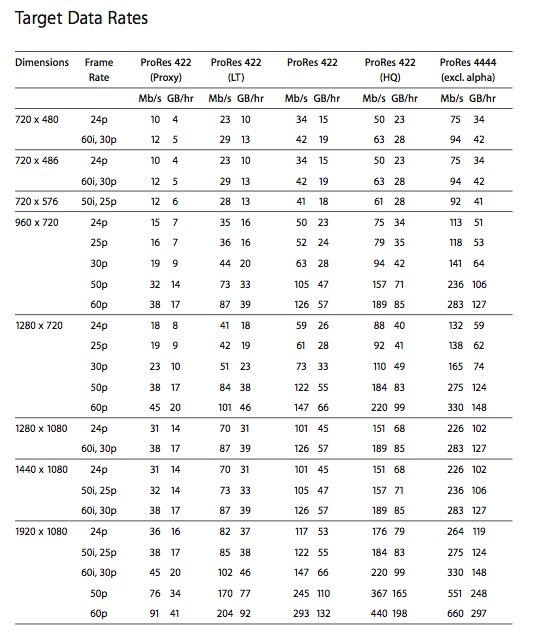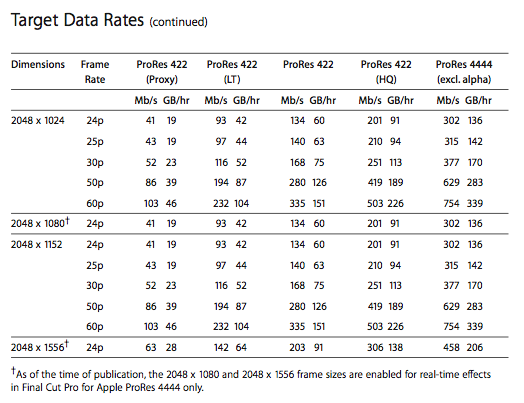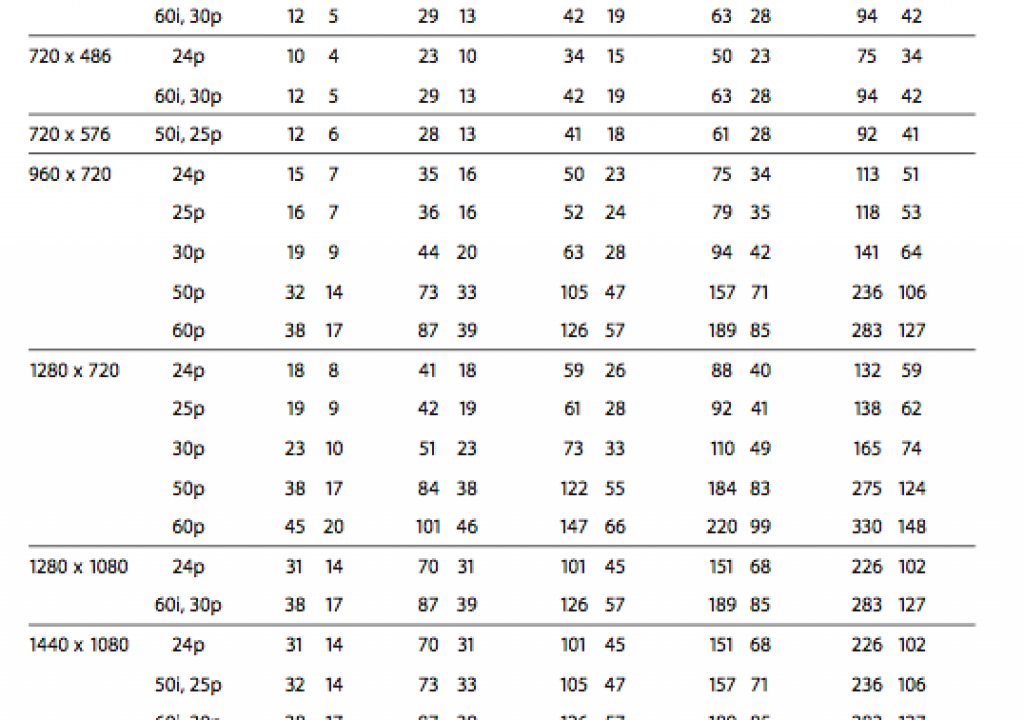Apple posted a handy white paper on the new ProRes codecs, and there’s some good stuff in there.
I went digging through the ProRes white paper that Apple posted with the release of Final Cut Pro 7, and found some useful info (which I’m betting they won’t mind m highlighting here). Read on.
First, I got it wrong originally about the ProRes4444 codec – alpha channels are supported up to 16 bits instead of the 12 I thought (and may have posted elsewhere). They are losslessly encoded, so they will match EXACTLY from the uncompressed alpha source. Not visually losslessly, mathematically losslessly. No argument – it matches. That ProRes4444 handles up to 12 bits is great – a minor point of quibblage – since it is compressed, it can be difficult to determine whether all 12 bits are accurately recorded/encoded since there is some loss of precision in a lossless codec. In practice, for shot-in-the-real-world material, this won’t matter, since every camera that generates 12 bits has more noise than signal in those last bits. Put another way – there is so much noise in the signal, recording 12 bits of it really doesn’t give you a meaningful benefit. (MANIPULATING those bits in a 12 bit or greater color sandbox, however, IS important!!!!)
Secondly, this useful chart to give you an idea of how many Mb/sec or GB/hour your footage takes up. It was stashed back in the Appendix, but considering I was about to test and generate this info, this just saved me a day:

continued on the next page:
Note that these datarates are in megaBITS, not megaBYTES, per second – 480p24 is 10 Mb/sec=1.25 MB/sec – that’s about a third of DV’s data rate, so only 4 GB per hour.
ProRes422 Proxy for 1080p24 is about 4.5 MB/sec – just a bit more than DV.
When you’re ready for full size, ProRes4444 (without alpha) is about 33 MB/sec for 1080p24 – VERY doable on a single modern hard drive.
Wanna do 2K files? 2Kx1080 at 24p for ProRes4444 is about 38 MB/sec, 2Kx1556 (anamorphic film scan sized) is about 57 MB/sec – still doable if you have a new fast drive – but only single stream, no realtime cross dissolves without a RAID.
Secondly, how much does it crunch the image down? This chart shows it pretty clearly:
There’s further info about the PSNR of ProRes422HQ (Peak Signal to Noise Ratio, that means how good is the quality/fidelity) compared to D5 and DNxHD, showing (according to Apple) that ProResHQ is better than D5 quality – something our own testing at DFC verified last year.
Anyway, there’s lots of good info in there – go read it if you are a codec geek like me.
I do wish they’d showed a PSNR result of uncompressed vs ProRes4444, and some samples of how much the alpha channel boosts the throughput – which shouldn’t be too terribly much if it is a typical alpha channel. Tests will confirm, though.
Argh – draft got eaten by timeout, now I gotta get back to work. But there’s good stuff in there – go read!
-mike

